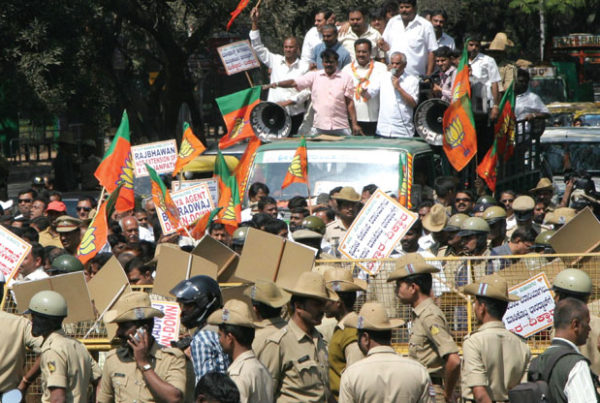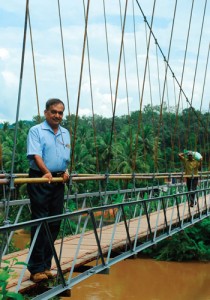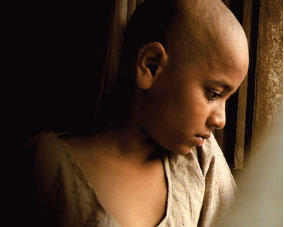They know what makes them happy, but if you don’t ask, street children won’t tell, finds out Sanjana Chappalli
 Photos: S. Radhakrishna
Photos: S. RadhakrishnaA CARD GAME is underway on top of an abandoned building in Bengaluru’s busiest shopping center, Commercial Street. It is past one in the afternoon. Engrossed in the game, Roshan and his friends don’t notice the blazing sun. Perched on small bundles of clothes, each clutching his cards, the boys look like they are in their early teens. Cigarette stubs, cardboard boxes and plastic bottles are strewn everywhere. As rag pickers, the boys have spent the morning collecting these items. Later in the evening, they will sell them before returning to the abandoned building.
The veneer of freedom that marks the lives of children like Roshan is in fact wafer-thin. It barely masks the economic fragility, drugs and violence that engulf thousands of street children every day. Even as their lives continue to fuel and inspire award-winning films like Salaam Bombay and Slumdog Millionaire, they continue to lead precarious lives.
Addressing these violations is a challenge for child rights activists. The government’s blinkered approach does not help, says Arlene Manoharan, a child rights practioner at Bengaluru’s National Law School of India University. “For the state, dealing with street children often means forcefully removing them from the streets, using the police,” she says. “The children are taken to rehabilitation centres or welfare homes. In an attempt to wean them off drugs, they are subjected to strict routines. At the first possible opportunity the children escape and return to the streets.”
‘AS ADULTS, WE ALWAYS ASSUME THAT WE KNOW WHAT IS BEST FOR THE CHILD,’ SAYS FONESCA
Does this mean that children prefer living on the streets to stability and security? Father Placido Fonesca, who has spent 40 years working with street children in Mumbai, disagrees. What is lacking, he says, is respect and recognition of the child’s right to participate. “As adults, we arrogantly believe that we know what is best for the child. So, we don’t involve them in taking decisions about their own lives,” says Fonesca. His organization, Sneh Sadan, runs 300 homes across Mumbai where street children are encouraged to spend time and integrate within a created family structure, if they so wish. Operating as “safe spaces” that provide food, shelter, security, these homes do not make too many demands on the child.
IN BENGALURU, Hasiru Sangha, a children’s collective, has struck roots among the city’s 60,000 street children. Initiated by Association for Promotion of Social Action (APSA), it encourages children to define issues important to them. 12-year-old Johnny walked into the Sangha three months ago to find children only slightly older than him organising a de-addiction camp. Within a week, he stopped sniffing erasex – the liquid whitening eraser. Ask Johnny what comes next and he does not know. “Perhaps learning to repair bikes,” he says.
“We will have to respect his decision rather than hand him a prescribed formula of school education,” says Sheila Devraj, director at APSA. “Over time, Johnny will hopefully learn a skill that will employ him. Or he may decide to join school. We have to create those opportunities, give them the information and let them decide if we want a longterm approach to rehabilitation of street children.” Admittedly, it is easier said than done. Most child rights experts agree that the longer children spend on the street, the harder it is to get them off it. Adopting an individual approach towards every child, by taking into account age, maturity and the trauma faced, becomes crucial.
At 1.1 crore, India has the largest number of street-dwelling children, below age 18, anywhere in the world. Shouldn’t that be reason enough for collective action?


